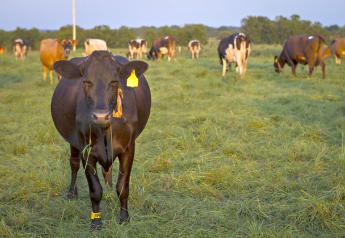Understanding Diseases Associated with Histophilus Somni

Histophilus somni (H. somni), formerly known as Haemophilus somnus, is a non-encapsulated, gram-negative bacterium in cattle, most commonly infecting feedlot cattle.1 It is a major pathogen of the bovine respiratory disease (BRD) complex, along with Mannheimia haemolytica and Pasteurella multocida, making it an economically significant pathogen for the cattle industry. Although we most frequently associate H. somni with BRD, it also infects several other organ systems and is a causative agent for multiple other diseases that can be life threatening to cattle.
Historically, H. somni has been found predominately in Canada, but in the early 2000s, it started popping up more often in diagnostic lab isolations in the Midwest and down into the Plains States where there is a high concentration of feedyards. More recently, diagnostic labs in the Midwest and Southeast are seeing an uptick in the prevalence of H. somni in isolates from BRD submissions in the area.
Veterinarians and researchers have hypothesized why H. somni is becoming more widespread and increasingly prevalent, but there is not a clear culprit. Nonetheless, it is important for producers to work with their veterinarian to understand the diseases associated with H. somni, what signs and symptoms to look for, when and how to intervene and general management and prevention strategies.
H. somni is an opportunistic pathogen. It breaks down the mucosal membrane’s i.e., the protective lining of organs, ability to protect and provide immunity to an organ or organ system.2 Stress from weaning, transportation or inclement weather along with other factors can further compromise the animal’s ability to fight off infection, leading to a variety of neurological, cardiac and respiratory conditions including:
- Pneumonia or pleuritis
- Septicemia
- Thrombotic meningoencephalitis (TME)
- Myocarditis
- Tenosynovitis
- Polysynovitis
Septicemia occurs when H. somni enters the bloodstream, triggering inflammation and the disruption of blood flow. TME is a neurological disease caused by H. somni that infects the brain. Myocarditis is a condition that causes inflammation of the heart muscle, and tenosynovitis and polysynovitis infect the joints and surrounding tendons causing severe inflammation. All can be life threatening and affect the overall health and well-being of cattle.
Other than BRD, these diseases caused by H. somni are hard to diagnose because infected cattle often show few clinical signs. Cattle with TME, myocarditis, septicemia and joint diseases may appear normal with sudden death being the only clinical sign. Once cattle are infected with H. somni, the disease progression can be very rapid. Other clinical signs that may be observed for TME are closed eyes, inability to get up from a lying position, fever or depression. Animals that can stand will be weak and may appear blind.2,3 Cattle experiencing myocarditis may show signs of heart failure, including cough, open mouth breathing and exercise intolerance.2 Since neurological and cardiac conditions caused by H. somni progress rapidly, usually leading to death within 24 hours without clinical signs, monitoring cattle for signs of respiratory disease is recommended. Respiratory disease often precedes other infections. Cattle with respiratory complications may exhibit high fevers, show labored breathing, cough or go off feed.
Since H. somni is difficult to diagnose and is a causative agent for multiple diseases, it can be difficult to treat and control. Choosing an antibiotic labeled for H. somni and administering the appropriate dosage at the onset of clinical signs and symptoms can help mitigate the devastating impact of diseases caused by the pathogen. When using an antibiotic for treatment and control, practicing antibiotic stewardship is most important. Weighing calves is recommended to determine the correct dosage to ensure proper efficacy and avoid antibiotic resistance. Regardless of the antibiotic used, producers should continue to closely monitor calves and follow recommended protocol for re-treatment.
In addition to treatment and control methods, management and prevention are key for reducing the occurrence and impact of H. somni in feeder cattle. Vaccinating calves with a modified live viral vaccine prior to transport and arrival to the feedlot can help build immunity to the viruses that can predispose to bacterial infection. Producers should also take steps to minimize stress in transportation by avoiding overcrowded trucks and reducing comingling and length of travel, if possible. Once they arrive at the feedlot, producers should provide the necessary support for a smooth transition by having clean pens, comfortable stocking density and fresh water and feed available. Producers may also consider categorizing cattle by risk level for disease upon arrival to allow for consistent monitoring and support to mitigate a disease outbreak. BRD usually occurs in the first 14-21 days in feeder cattle. However, diagnostic reporting shows that cattle infected with H. somni may have late-term outbreaks between 30-60 days. Therefore, cattle at high risk may benefit from metaphylaxis treatment with a long-acting antibiotic on arrival or when 10-20% of the group are showing signs of respiratory distress.3 Regardless of management and prevention strategies, it is crucial to continue monitoring calves and apply appropriate follow-up support and treatment.
H. somni can cause many life threatening and financially significant diseases in feedlot cattle. That’s why prevention tactics and management tools are key for reducing the occurrence of these diseases and their devastating impact on cattle health and producers’ investments.
To learn more about tools to help control, treat and prevent H. somni on your operation, talk with your Elanco representative today or visit ElancoBRD.com.







